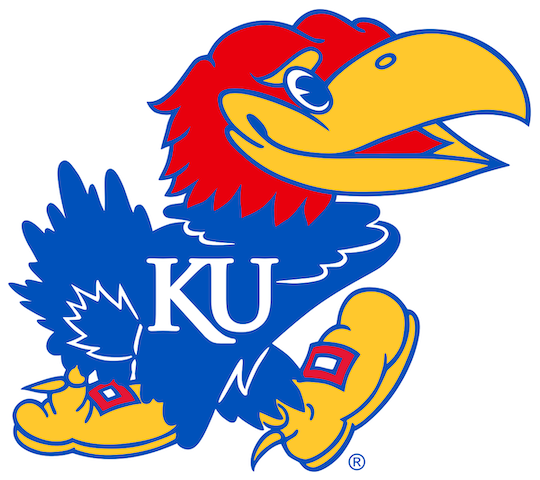Throwback Video Thursday: Jim Ryun
June 14, 2012
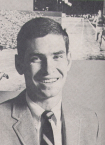 Jim Ryun (Track & Field) 1965-69
Jim Ryun (Track & Field) 1965-69
When one mentions Kansas track and field it is hard not to hear the name Jim Ryun shortly afterwards. The Wichita, Kan. native burst onto the collegiate scene after becoming the first high school runner to achieve a four-minute mile. Ryun’s prowess grew during his time at KU as he continued to set records and in the process make a name for himself in the sport on an international stage. Ryun competed in a total of three different Olympic Games, winning a silver medal in 1968 at Mexico City. All in all the Jayhawk turned international athletic marvel set a total of five world records during his illustrious career. Ryun continued to run following his collegiate and professional career, but this time in the political arena as he was elected to the U.S House of Representatives where he represented the second district of Kansas for a decade. Ryun continues to influence the sport he made a name for himself in, helping younger runners achieve their goals through `Ryun Running’ and the Adidas Jim Ryun High School Dream Mile.’ 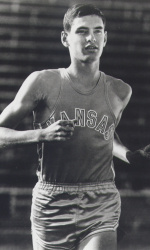
How did you first get started in the sport of running?
“It was actually a surprise that I was a runner because I wanted to be something else. After being cut from the church baseball team and the junior high basketball team, I fell into the sport as a cross country runner in high school. Then, when the track season came around I was disappointed that the longest distance you could run in Kansas those days was one mile, so I became a miler in a sense by default.”
What made you decide to come to Kansas and run collegiately?
“I came following Coach (Bob) Timmons and I will share a brief story with you about that. When I was riding the school bus after my fourth high school race from the Washington Relays in Kansas City back to Wichita, I sat down and talked to Coach Timmons. He said, `You ran a really good race.’ On that day I had ran a 4:21 mile, so I won my third race in a row. He said to me, ‘Now how fast do you think you can run?’ I was so new to the sport of running that I said maybe on a good day 4:19. Well he said, “Then I think you can be the (national) record holder’. At that time the record was 4:08 and there is a big difference between 4:21 and 4:08. He had my attention already, but he then said, ‘I think you can also do something that no one has ever done before. I think you can be the first high school boy to run it under four minutes’. I thought, wow now how is that possible? But he was my inspiration and direction and would take over the next couple of years and mold me into the runner I would eventually become.”
What do you remember about the 1969 Kansas Relays in when close to 36,000 fans showed up to Memorial Stadium to see you compete?
“It was my last time to run in the relays because I would turn professional after that. It was an Olympic year and I had at times been running well, so everyone really turned out that day. In fact I learned from the ticket takers, that they ran out of tickets so they started letting everybody in during the last minute because there was a real surge to come in at that moment.”
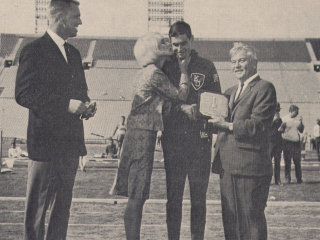 What does it mean to you to be a part of and to have authored your own chapter in the illustrious history of the Kansas track and field program?
What does it mean to you to be a part of and to have authored your own chapter in the illustrious history of the Kansas track and field program?
“I actually find that hard to relate to because in those early days growing up in Wichita, I was what you might call the `grade school nerd’. Those sorts of images stuck with me so that when I first started running I had difficulty believing it was me running in those races. Here I am a skinny kid from Wichita, Kan., and at 17 and was running against the best in the world.”
You competed in three different Olympics Games, but in 1972 were involved in a controversial finish to one of your races. How did that ending impact you?
“I went into the 1972 Olympics as one of the favorites to win the Olympic gold medal. During the opening round of competition there were 500-meters to go and I was back in the pack and I only had to qualify for the next round. As I am ready to move up a little bit there is this space that opens up and I start to move into that spot but it quickly closes. When it does, I slow down and the runner behind me bumps me and we both fall to the ground. So I get up and finish the race hoping that I qualify for the next round. Somehow my wife Ann has worked her way down to the athlete’s tunnel and we embraced each other, prayed, and hoped for something different. All of a sudden the media was upon us and the coaches were there and their response was that I would be reinstated because it was obvious it was a foul.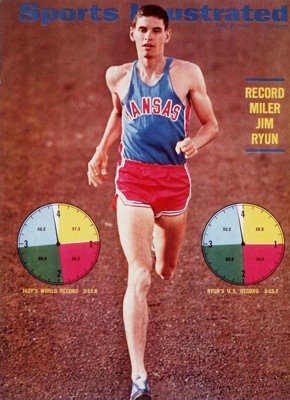
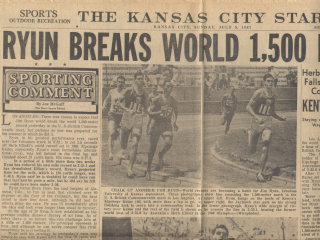
They eventually disappeared and we started walking down the tunnel until I saw an acquaintance I had made at ABC-TV named Howard Cossell and I said, `Howard I need some help!’ He said, `Jimmy… sit down because we’re going to right a petition for reinstatement and you’ll be put back in those Olympic Games’. So he helped me write out a petition, it was submitted and the next morning I met with the official before the next round of competition. He looked at it and said, `You know we haven’t done this forever and you are not going to be the first, so why don’t you come back in four years and try again. What I really wanted to do was release some of my anger on him but it didn’t happen and I am grateful it didn’t. So I walked away from what most people would consider a failure for not going on and winning, but I learned one of the most valuable lessons of my life and that is forgiveness. It took me a few years to forgive that man, but I did.”
Following your career you ran again but this time for politics as you were elected to represent Kansas in the U.S. house of representatives. What sparked your interest in that new direction of your life?
“To a certain extent those early days in my high school and collegiate career, racing against the old Soviet Union in Moscow, Kiev as well as East Germany sparked my interest in the political arena. That’s because you could see such a different form of government and often times oppressive. So I would come back to this country and almost get off the plane and kiss the ground because it is so great to come back to America. I said then in my heart that maybe someday I would have an opportunity to help serve the state of Kansas. So my purpose in wanting to serve in Congress was to help other people and serve those in the second district of Kansas with their issues. We had the opportunity to help them with immigration, adoption and various other issues.”
You have had many different titles throughout your life… Olympian, World Record Holder, Politician and `Jayhawk’. What does that last one mean to you?
“It is a very special honor. You come to a school with a rich tradition and it is a great honor to be a part of that program here. I am just pleased that I could be here for the years that I was and carry the state of Kansas and the Jayhawks. It’s something even now that I reflect on because most of our children went to school here, so that is a big part of it.”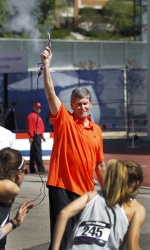
You still are involved in the sport as you have a couple of different ventures with Adidas, such as the `Jim Ryun Dream Mile’ and the `Jim Ryun Running Camps’, what does it mean that you can give back to the sport and its youth in that capacity?
“We do that from the standpoint of who will be the next four-minute miler or Jim Ryun, so that will give them a target to shoot for. It really is a wonderful experience. I also do the Jim Ryun running camps and have been doing those for 39-years and working with youngsters all over the world, so I think that we have had about 6,000 runners go through it. Some do really well and go back to their high school and some are competing for a medal in these Olympics (London, 2012). So our hope is to inspire but also give them the tools to help them run faster.”
How often do you still get out onto the track or pavement and run today?
“I try and run every other day, but I found now that I like to do alternate exercises like the elliptical or stationary bike but I still run. I enjoy it and I still have my original knees and hips along with everything else, so I am grateful that at 65 everything still works.”
| Jim Ryun World Records (1966-71) | |
| Event |
Time/Date/City |
| 880 yds | 1:44.9 / 10-6-66 / Terre Haute, Ind. |
| 1500m | 3:33.1 / 7-8-67 / Los Angeles, Calif. |
| Mile (O) | 3:51.3 / 7-17-66 / Berkeley, Calif. |
| Mile (O) |
3:51.1 / 6-23-67 / Bakersfield, Calif. |
| Mile (I) |
3:56.4 / 2-19-71 / San Diego, Calif. |
Jim Ryun Website: www.ryunrunning.com
Throwback Thursday Archive: http://www.kuathletics.com/throwbackthursday.html
